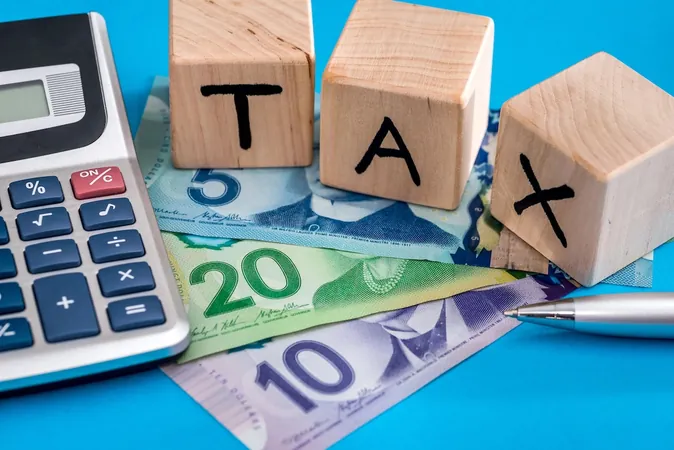
Major Changes to Canada’s Income Tax Brackets for 2025: What You Need to Know!
2024-11-23
Author: Emily
The Canada Revenue Agency (CRA) has recently revealed its updated federal income tax brackets for 2025, implementing adjustments influenced by inflation trends. Effective January 1, 2025, these changes are crucial for Canadian taxpayers navigating financial landscapes marked by varying economic conditions.
While the federal tax rates remain stable, the income thresholds for each tax bracket have been slightly modified, reflecting a 2.7% indexation rise, significantly lower than the 4.7% adjustment from the previous year. These updates aim to ensure that Canadians experience fair taxation, given the ongoing shifts in the economy.
Understanding the Tax Bracket System
Canada operates on a progressive income tax system, meaning taxpayers pay different rates depending on their income levels. The revised thresholds for 2025 will allocate taxation in the following manner:
- **15%** on income of **$57,375 or less**. - **20.5%** on income from **$57,375.01 to $114,750**. - **26%** on income from **$114,750.01 to $177,882**. - **29%** on income between **$177,882.01 and $253,414**. - A peak rate of **33%** for income exceeding **$253,414.01**.
The Role of Indexation
Indexation, an annual adjustment based on the Consumer Price Index (CPI), is intended to protect taxpayers from the impacts of inflation. This year’s 2.7% adjustment represents a noticeable cooling from last year’s significant increase, reflecting a shift in Canada’s economic pressures.
Federal Benefit Adjustments for 2025
In addition to the tax bracket alterations, several benefits provided by the CRA have also seen increases, enhancing support for families and low-income individuals across the nation:
- **Canada Child Benefit (CCB)**: Maximum benefits rise to **$7,997** per child under six and **$6,748** for children aged six to seventeen. The phase-out thresholds have been set at **$37,487** and **$81,222** for family net income, respectively.
- **Goods and Services Tax (GST) Credit**: For low-income individuals, the maximum payment has increased to **$349** for adults and **$184** for children.
- **Canada Workers Benefit (CWB)**: Aimed at supporting low-income workers, the benefit now stands at **$1,633** for single individuals and **$2,813** for families, showcasing a continual increase.
Implications for Taxpayers
The adjustments made for 2025 imply that a greater percentage of individual incomes will now fall within lower tax brackets, effectively reducing the taxation burden for many. This is particularly beneficial for low- and middle-income families who can also look forward to enhanced support through revised government benefits.
Taxpayers are encouraged to familiarize themselves with these changes and consider adapting their financial strategies, particularly with contributions to tax-efficient accounts like Tax-Free Savings Accounts (TFSAs) and Registered Retirement Savings Plans (RRSPs).
Conclusion
With these amendments, Canadian taxpayers can look forward to a more favorable tax landscape in 2025. The CRA's commitment to modifying tax brackets annually aims to maintain equity in the taxation system while providing increased benefits to support those most in need.
Make sure to dig deeper and consult with tax professionals or utilize CRA's online resources to maximize the benefits of these changes and ensure proper tax planning for the upcoming year. Don't get left behind! Stay informed for better financial health!









 Brasil (PT)
Brasil (PT)
 Canada (EN)
Canada (EN)
 Chile (ES)
Chile (ES)
 España (ES)
España (ES)
 France (FR)
France (FR)
 Hong Kong (EN)
Hong Kong (EN)
 Italia (IT)
Italia (IT)
 日本 (JA)
日本 (JA)
 Magyarország (HU)
Magyarország (HU)
 Norge (NO)
Norge (NO)
 Polska (PL)
Polska (PL)
 Schweiz (DE)
Schweiz (DE)
 Singapore (EN)
Singapore (EN)
 Sverige (SV)
Sverige (SV)
 Suomi (FI)
Suomi (FI)
 Türkiye (TR)
Türkiye (TR)